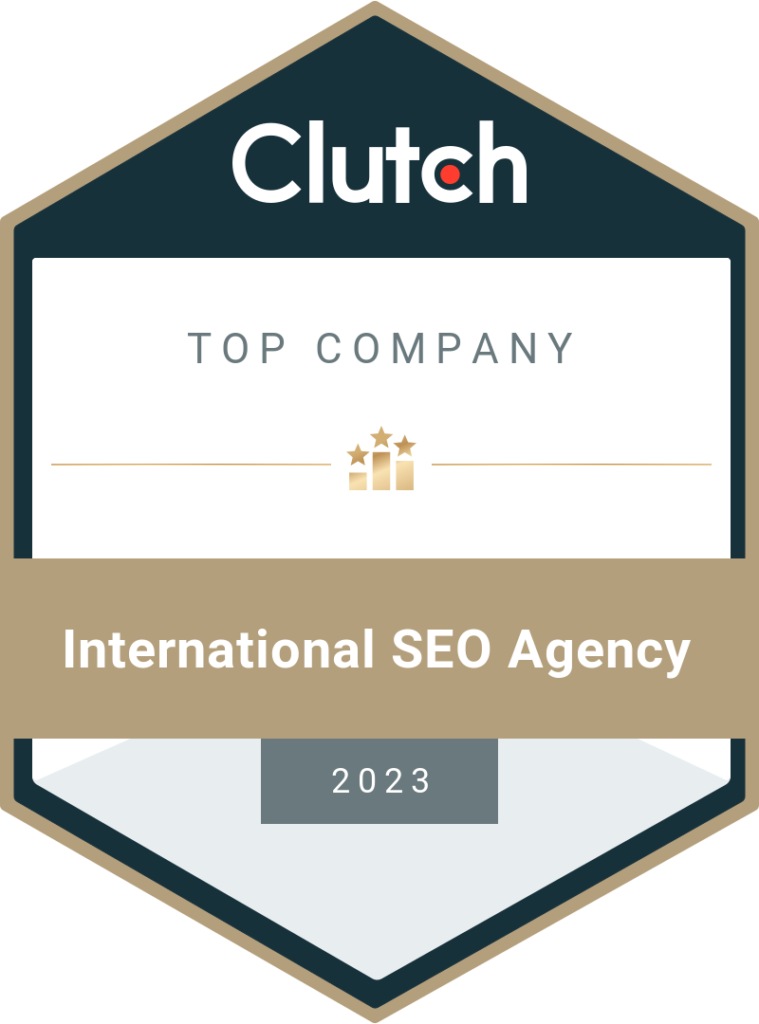Are you planning to build a Magento Website for your ecommerce store? You have come to the right place. In this blog, we will discuss how much does magento website development cost in India.
Magento is a powerful and highly popular e-commerce platform known for its flexibility, scalability, and robust feature set. It was originally developed by Varien Inc. and is now a part of Adobe Inc.’s suite of e-commerce solutions. Magento is utilized by a vast array of businesses, from small startups to large enterprises, to create and manage online stores and e-commerce websites.
Here’s a brief overview of some key aspects of Magento:
- Open-Source and Commerce Edition: Magento offers both an open-source edition (Magento Open Source) and a premium commerce edition (Magento Commerce). The open-source version is free and can be self-hosted, making it a cost-effective option for smaller businesses. Magento Commerce, on the other hand, offers additional features and support.
- Extensibility: One of Magento’s standout features is its extensibility. It has a robust extension marketplace where users can find and install a wide range of extensions and plugins to enhance the functionality of their online stores.
- Customization: Magento is highly customizable, allowing businesses to tailor their online stores to their specific needs. This includes customizing the look and feel, as well as implementing unique features and functionalities.
- Scalability: Magento is designed to handle a wide range of business sizes and growth stages. It can accommodate the needs of small businesses while also providing the infrastructure for large enterprises.
- Multi-Store Capabilities: Businesses can manage multiple online stores from a single Magento installation, making it a convenient choice for those with various brands, product lines, or markets.
- SEO-Friendly: Magento is well-regarded for its SEO (Search Engine Optimization) features, making it easier for businesses to optimize their online stores for search engines and increase their visibility in search results.
- Mobile Responsiveness: In an era where mobile shopping is increasingly important, Magento ensures that online stores are mobile-responsive, providing a seamless shopping experience on various devices.
- Security: Magento pays significant attention to security, providing regular updates and security patches to protect online stores from potential threats.
- Community and Support: There’s an active Magento community that shares knowledge, best practices, and support. Additionally, Adobe provides customer support for the Commerce edition.
Magento is a versatile and feature-rich e-commerce platform that empowers businesses to create and manage their online stores effectively. Its open-source nature, combined with its customization and scalability, makes it a go-to choice for many e-commerce businesses. However, the choice between the open-source and commerce editions depends on a business’s specific needs and budget
Why Magento is a Good Choice for Ecommerce Website
Magento is a favored option for building e-commerce websites for a variety of compelling reasons. Let’s explore some of the key reasons why businesses often choose Magento for their e-commerce ventures:
- Scalability and Flexibility:
- Magento is highly scalable, capable of growing with your business. Whether you’re a small startup or a large enterprise, Magento can adapt to your changing needs and handle increased traffic and transactions.
- Customization and Extensibility:
- Magento is known for its extensive customization capabilities. It offers a vast array of themes, templates, and plugins, allowing businesses to tailor their online stores to match their brand image and unique requirements.
- Rich Feature Set:
- Magento provides a comprehensive set of e-commerce features, including product management, inventory management, customer accounts, payment gateways, order management, shipping, and more. These features help in creating a fully functional and professional online store.
- Multi-Store Management:
- Businesses can operate multiple online stores from a single Magento installation, streamlining management and reducing overhead. This is particularly useful for businesses with diverse product lines, brands, or markets.
- SEO-Friendly:
- Magento is designed with SEO best practices in mind. It allows for customizable URLs, meta tags, sitemaps, and more, enabling better visibility in search engine results and attracting more organic traffic.
- Mobile Responsiveness:
- With the increasing use of mobile devices for online shopping, Magento offers mobile-responsive designs. This ensures a seamless and engaging shopping experience for customers on various devices, including smartphones and tablets.
- Community and Support:
- Magento has a vibrant and supportive community of developers, designers, and users who contribute to its growth. The community provides extensive resources, forums, and knowledge sharing, making it easier for businesses to find help and solutions to their problems.
- Security:
- Security is a top priority for any online business. Magento offers a secure platform and regularly releases security updates and patches to protect against potential vulnerabilities, ensuring a safe and trustworthy online shopping environment.
- Analytics and Reporting:
- Magento provides robust analytics and reporting features that enable businesses to track their store’s performance, analyze customer behavior, and make informed decisions to improve their e-commerce strategies.
- Integration Capabilities:
- Magento seamlessly integrates with various third-party applications and services, such as payment gateways, shipping providers, email marketing tools, and more, allowing for a fully integrated and efficient e-commerce ecosystem.
- Global Reach:
- Magento supports multiple languages, currencies, and tax structures, making it suitable for businesses looking to expand their reach globally.
Magento offers a powerful and versatile platform for e-commerce businesses, providing the essential tools and features needed to create a successful online store. Its scalability, customization options, robust feature set, and active community support make it a solid choice for businesses seeking to establish a strong online presence.
Essentials to build a Magento Website?
To build a Magento website successfully, you’ll need a combination of essential components, including planning, software, design elements, development skills, and other crucial elements. Here’s a comprehensive list to guide you through the process:
- Project Planning and Strategy:
- Define your business goals, target audience, and unique selling propositions.
- Conduct market research to identify competitors and market trends.
- Create a detailed project plan, including timelines, milestones, and resource allocation.
- Domain Name and Hosting:
- Purchase a domain name that reflects your brand and is easy to remember.
- Choose a reliable hosting provider that meets Magento’s system requirements for optimal website performance.
- Magento Platform:
- Download and install the Magento platform (Magento Open Source or Magento Commerce) based on your project requirements.
- Magento Theme:
- Choose and install a Magento theme that aligns with your brand, industry, and desired design.
- Customize the theme to match your brand colors, fonts, and overall aesthetic.
- Extensions and Modules:
- Install essential Magento extensions or modules for additional features and functionalities (e.g., payment gateways, SEO tools, security enhancements).
- Content Management and Products:
- Populate your website with engaging and optimized content, including product descriptions, images, categories, and pricing.
- Configure product attributes, options, and variations based on your product catalog.
- Design Elements:
- Optimize design elements such as logos, images, banners, and graphics to enhance the visual appeal of your website.
- User Experience (UX) Design:
- Design an intuitive and user-friendly interface, focusing on easy navigation, clear calls-to-action, and a seamless shopping experience.
- SEO Strategy and Optimization:
- Implement SEO best practices, including keyword research, on-page and off-page optimization, meta tags, schema markup, and mobile optimization.
- Security Measures:
- Enhance website security by configuring SSL encryption, setting strong passwords, and regularly updating Magento with the latest security patches.
- Payment Gateway Integration:
- Integrate secure and reliable payment gateways that align with your business model and target audience preferences.
- Shipping and Tax Configuration:
- Configure shipping methods, rates, and tax rules based on your products and business operations.
- Performance Optimization:
- Optimize website performance by implementing caching mechanisms, image compression, and code minification to enhance page load speed.
- Testing and Quality Assurance:
- Conduct thorough testing, including functional testing, usability testing, cross-browser testing, and performance testing, to ensure a flawless user experience.
- Launch and Deployment:
- Prepare for the website launch by finalizing all configurations, testing, and resolving any outstanding issues.
- Make the website live and monitor its performance, ensuring a smooth transition to the live environment.
- Ongoing Maintenance and Updates:
- Plan for regular maintenance, updates, and improvements based on user feedback, website analytics, and changing business needs.
- User Training and Support:
- Train your team on using the Magento platform, managing products, processing orders, and handling customer inquiries.
- Provide ongoing technical support to address any issues and ensure smooth operations.
By addressing these essentials, you’ll be well on your way to building a successful Magento website that meets your business objectives and provides a positive experience for your customers.
How Much does it cost to build a Magento website in India
The cost to build a Magento website in India can vary widely based on various factors, including the complexity of the project, the level of customization, the number of features, design requirements, the expertise of the development team, and the timeline for completion. Additionally, labor and development costs can vary across different regions within India.
Here’s a general cost breakdown for building a Magento website in India:
- Simple Magento Website:
- For a basic Magento website with standard features, a simple design, and minimal customization, the cost can range from approximately ₹50,000 to ₹2,00,000 or more.
- Mid-sized E-commerce Store:
- A mid-sized e-commerce store with moderate customization, several product categories, payment integrations, and a customized design can cost between ₹2,00,000 to ₹8,00,000 or more.
- Complex E-commerce Platform:
- Large-scale e-commerce platforms with extensive customization, multiple integrations, advanced features, complex product configurations, and custom extensions can cost ₹8,00,000 to ₹20,00,000 or more.
- Enterprise-Level E-commerce Solution:
- Enterprise-level e-commerce projects with high customization, advanced functionalities, scalability requirements, and integration with complex systems can cost ₹20,00,000 and above.
It’s important to note that these are rough estimates and actual costs may vary based on your specific project requirements, the development team’s expertise, the complexity of the design, the need for customizations, and any ongoing maintenance or support you may require.
Factors that influence the cost include:
- Design Complexity: Custom designs and complex UI/UX requirements can increase the cost.
- Functionality and Features: Advanced features, integrations, and functionalities will add to the development cost.
- Third-Party Integrations: Integrating with third-party systems or APIs can impact the budget.
- Customization: The extent of customization needed, including custom modules or extensions, will affect the overall cost.
- Maintenance and Support: Ongoing maintenance and support contracts may also be an additional cost.
To get an accurate cost estimate for your specific project, it’s advisable to consult with multiple Magento development agencies or freelancers, provide them with a detailed project scope, and request comprehensive proposals outlining the cost breakdown and timelines. Additionally, ensure to discuss any potential ongoing costs for maintenance and support after the website is launched.
Factors Affecting Magento Website Development Costs
The cost of developing a Magento website can vary significantly based on several factors. Understanding these factors will help you estimate and plan your budget accurately. Here are the key elements that influence the cost of Magento website development:
- Project Complexity and Scope:
- The complexity and scope of the project play a major role in determining the development cost. A simple e-commerce website will be less expensive than a complex multi-store setup with custom features, integrations, and advanced functionalities.
- Customization Requirements:
- The level of customization needed for the website, including design, features, and functionalities, will impact the cost. Extensive customizations often require more development time and resources, thus increasing the overall cost.
- Design and User Experience:
- Design intricacy and user experience requirements influence development costs. A highly polished and user-friendly interface with custom designs and layouts will typically cost more than using pre-designed templates.
- Third-Party Integrations:
- Integrating third-party applications, payment gateways, shipping solutions, CRM systems, and other tools with Magento can increase the cost. Integration complexity and the number of integrations needed will affect the overall development budget.
- Data Migration and Import:
- If you’re migrating an existing website or importing a large amount of data (products, customers, orders) into Magento, the complexity of this process can impact costs. Data migration requires careful planning and execution.
- Hosting and Server Infrastructure:
- The hosting environment and server infrastructure needed to support the Magento website can influence the cost. Factors include server specifications, cloud hosting, security measures, and scalability requirements.
- Number of Products and Categories:
- The size and complexity of your product catalog (number of products, categories, attributes) affect development costs. Managing a vast product range and diverse categories may require additional development effort.
- Performance Optimization:
- Enhancing website performance for speed, scalability, and responsiveness involves optimization efforts. Performance optimization is critical for user satisfaction and can impact development costs.
- Multilingual and Multicurrency Support:
- If your e-commerce store requires support for multiple languages and currencies to cater to a global audience, it can increase development costs due to additional development and testing efforts.
- Compliance and Security Requirements:
- Compliance with industry standards (e.g., GDPR, PCI-DSS) and the implementation of robust security measures to protect user data can add to the development cost.
- Testing and Quality Assurance:
- Rigorous testing and quality assurance processes are essential to ensure a bug-free and reliable website. Testing complexity and the depth of quality assurance efforts influence development costs.
- Ongoing Maintenance and Support:
- Factoring in ongoing maintenance and support costs is crucial for the long-term success of the website. Budget for updates, security patches, performance optimization, and technical support post-launch.
Understanding and considering these factors while planning your Magento website development will help you make informed decisions and allocate a realistic budget for your project.
How much does Magento themes cost?
The cost of Magento themes can vary widely based on several factors, including the theme’s complexity, features, design quality, customizability, and the platform from which you purchase or download the theme. Here’s a breakdown of the typical cost ranges for Magento themes:
- Free Themes:
- Free Magento themes are available in the Magento Marketplace or from various theme providers. These themes offer basic design and features without any cost. However, they may have limited customization options and may not be as feature-rich or unique.
- Premium Themes:
- Premium Magento themes usually range in price from $50 to $500 or more. These themes often offer more advanced features, better design quality, regular updates, and support from the theme provider.
- Custom Themes:
- Creating a custom Magento theme can be more expensive and typically starts at $1,000 and can go up to several thousand dollars. Custom themes are tailored to your specific requirements and branding, offering a unique and personalized design.
- Theme Marketplaces and Providers:
- Many theme marketplaces and providers offer both free and premium Magento themes. Some popular platforms to purchase Magento themes include:
- ThemeForest (part of Envato Market)
- TemplateMonster
- Magento Marketplace
- CreativeMarket
- Theme providers’ websites (e.g., Porto, Ultimo, Claue)
- Many theme marketplaces and providers offer both free and premium Magento themes. Some popular platforms to purchase Magento themes include:
It’s important to consider the following factors when determining the cost of a Magento theme:
- Features and Functionalities: The more features and customization options a theme offers, the higher the cost is likely to be.
- Design Quality and Responsiveness: High-quality designs and themes that are responsive across various devices often come at a higher price point.
- Support and Updates: Themes with regular updates and reliable support are often priced higher due to the ongoing value they provide.
- Integration with Extensions and Plugins: Themes that integrate seamlessly with popular Magento extensions may be more expensive due to enhanced functionality and compatibility.
- Licensing and Usage: Check the licensing terms to determine if the theme is for a single use or if you can use it on multiple sites.
Always assess your specific project requirements, budget, and preferences before purchasing a Magento theme. Consider whether a free, premium, or custom theme best aligns with your e-commerce goals and branding. Additionally, ensure the theme you choose is compatible with your Magento version to avoid potential issues during installation and customization.
Breakdown of Magento Website Development Costs
Breaking down Magento website development costs involves analyzing the various components and estimating the expenses associated with each. Here’s a breakdown of potential cost components for developing a Magento website:
- Development Team Costs:
- Magento Developer(s): Costs associated with hiring skilled developers proficient in Magento development.
- Front-End Developer(s): Expense for professionals specializing in creating the website’s user interface and ensuring a great user experience.
- Back-End Developer(s): Cost for developers handling server-side functionalities, databases, and integration of third-party systems.
- Design and User Interface Costs:
- UI/UX Designers: Expense for designing the user interface and ensuring a visually appealing and user-friendly website.
- Theme Customization or Development: Cost to customize an existing theme or develop a custom theme tailored to the specific needs of the business.
- Customization and Functionality Costs:
- Custom Feature Development: Expense for developing unique features or functionalities specific to the business requirements.
- Third-Party Integrations: Costs associated with integrating third-party applications, payment gateways, shipping solutions, CRM systems, etc.
- Data Migration and Import Costs:
- Data Migration Services: Cost for migrating and importing existing data, including product details, customer information, and orders, into the Magento platform.
- Hosting and Server Infrastructure Costs:
- Hosting Services: Expenses related to hosting the Magento website, including server costs, cloud hosting, or managed hosting services.
- Domain and SSL Certificate: Cost for purchasing and renewing the domain name and obtaining SSL certificates for secure transactions.
- Performance Optimization Costs:
- Website Speed Optimization: Cost for optimizing the website’s speed and performance to enhance user experience and reduce bounce rates.
- Quality Assurance and Testing Costs:
- Testing Tools and Software: Expenses for testing tools and software used to ensure the website’s functionality, compatibility, and security.
- Quality Assurance (QA) Testing: Cost associated with QA testing to identify and rectify bugs, errors, and inconsistencies.
- Training and Documentation Costs:
- Training for Admin Users: Cost to provide training to admin users for effectively managing and operating the Magento website.
- Documentation Creation: Expense for creating user manuals and documentation for website maintenance and operations.
- Ongoing Maintenance and Support Costs:
- Software Updates and Patches: Cost for purchasing or implementing software updates, security patches, and bug fixes.
- Technical Support and Maintenance: Cost for ongoing technical support, maintenance, and troubleshooting services.
- Other Miscellaneous Costs:
- Legal and Compliance Costs: Expenses related to legal aspects, licenses, and compliance requirements.
- Consultation and Project Management: Cost for consultation services and project management throughout the development process.
- Contingency Budget:
- Contingency Reserve: A small portion of the budget set aside for unforeseen expenses or scope changes during the development process.
It’s important to note that the actual costs can vary based on the project’s complexity, size, customization needs, and the region or country where the development is carried out due to differences in labor rates and economic factors. It’s advisable to consult with a Magento development agency or professionals to get a detailed cost estimation tailored to your specific project requirements.
Estimating Magento Development Costs
Estimating Magento development costs involves a comprehensive assessment of project requirements and a thorough understanding of the factors that influence pricing. Here’s a step-by-step approach to help you estimate the costs accurately:
- Define Project Scope and Objectives:
- Clearly outline the goals, functionalities, and features you want in your Magento website. Define the number of pages, product categories, integrations, and any customizations needed.
- Gather Detailed Requirements:
- Work closely with stakeholders to gather detailed requirements for the website’s design, features, user experience, and any custom development work. Document all requirements in a structured manner.
- Prioritize Features and Functionalities:
- Prioritize the features and functionalities based on their importance and criticality to the project. Identify essential, desirable, and optional elements.
- Consult Magento Development Agencies or Freelancers:
- Reach out to Magento development agencies or freelancers to discuss your project requirements and obtain initial cost estimates. Provide them with the project scope and any wireframes or design ideas you have.
- Request Detailed Proposals:
- Request detailed proposals from multiple development agencies or freelancers. Ask for a breakdown of costs for different components, including design, development, testing, integrations, etc.
- Review Case Studies and Portfolios:
- Examine case studies and portfolios of potential development partners to gauge the complexity of past projects and corresponding costs. Compare them with your project requirements.
- Consider Hourly Rates or Fixed Pricing:
- Understand the pricing models used by developers: hourly rates or fixed project pricing. Decide which pricing model aligns best with your project and budget.
- Factor in Ongoing Maintenance and Support:
- Include estimates for ongoing maintenance, support, and potential updates. Determine if you’ll need a maintenance contract and its associated costs.
- Calculate Total Estimated Costs:
- Sum up the estimated costs from each development agency or freelancer to calculate the total estimated development cost range.
- Account for Contingency and Buffer:
- Add a contingency budget (e.g., 10-20%) to account for unforeseen changes, additional requirements, or unexpected challenges that may arise during the project.
- Finalize Budget and Negotiate:
- Finalize your budget based on the estimated costs and your financial capabilities. Negotiate with the development agency or freelancer to reach a mutually agreeable contract.
- Account for Post-launch Costs:
- Plan for post-launch expenses such as marketing, SEO, content creation, and any other ongoing efforts to drive traffic and conversions.
Remember, accurate cost estimation is crucial for a successful project. Collaborate closely with the development team, be transparent about your expectations and budget constraints, and choose a reliable partner that understands your business needs. Keep in mind that investing in a quality Magento website can yield significant returns, making it a worthwhile investment for your e-commerce business.
Ways to Optimize Magento Development Costs
Optimizing Magento development costs is essential to ensure a successful project while staying within your budget constraints. Here are several effective strategies to help you optimize costs without compromising on the quality of your Magento website:
- Thoroughly Define Project Scope:
- Clearly define and document the project scope, features, and requirements at the outset. Avoid scope creep by managing changes effectively and adhering to the defined scope to prevent unnecessary development costs.
- Prioritize Features and Functionalities:
- Identify and prioritize essential features that are critical to your business objectives. Start with a minimal viable product (MVP) and gradually add features based on user feedback and business needs, reducing initial development costs.
- Utilize Ready-Made Themes and Extensions:
- Leverage pre-designed themes and ready-made extensions available in the Magento Marketplace. This can significantly reduce design and development time, resulting in cost savings.
- Consider Open Source Solutions:
- Opt for Magento Open Source instead of Magento Commerce (formerly known as Magento Enterprise) to save on licensing costs. Magento Open Source provides a robust set of features and functionalities for many e-commerce needs.
- Customization vs. Standard Features:
- Assess the necessity of customizing certain features. Evaluate if standard Magento features can fulfill your requirements before opting for custom development, as customization typically involves higher costs.
- Efficient Project Management:
- Implement efficient project management methodologies to streamline the development process, avoid delays, and reduce associated costs. Agile methodologies can help manage changes and prioritize tasks effectively.
- Outsource to Cost-Effective Providers:
- Consider outsourcing certain development tasks to cost-effective regions or providers while ensuring quality standards are met. Freelancers or development agencies in regions with lower labor costs may offer competitive rates.
- Optimize Performance Early On:
- Focus on performance optimization during the development phase to avoid costly rework later. Optimize code, images, and database queries to enhance the website’s speed and responsiveness.
- Training and Documentation:
- Provide comprehensive training to your team to manage and maintain the website effectively. Well-trained teams can reduce dependence on developers and associated support costs.
- Regular Testing and Quality Assurance:
- Conduct rigorous testing throughout the development process to catch and address issues early, minimizing the cost of fixing bugs later in the project lifecycle.
- Negotiate with Developers:
- Negotiate project costs, payment terms, and deliverables with the development team. Consider long-term relationships with developers for potential cost-saving benefits.
- Continuous Monitoring and Improvement:
- Regularly monitor the website’s performance and user feedback to identify areas for improvement. Continuously optimize and enhance the website based on user behavior and changing market demands.
- Optimize Hosting Costs:
- Choose a hosting solution that aligns with your traffic and performance requirements. Consider scalable hosting options to adjust resources as needed, optimizing hosting costs.
By implementing these cost-saving strategies and effectively managing your Magento development project, you can optimize costs while achieving a high-quality e-commerce website that meets your business goals.
What features a Magento website must have?
A successful Magento website should incorporate essential features that enhance user experience, streamline the buying process, and optimize business operations. Here’s a list of must-have features for a Magento e-commerce website:
- User-Friendly Interface and Navigation:
- Intuitive and easy-to-navigate design with a clear layout, ensuring a seamless user experience.
- Product Management:
- Ability to easily add, edit, and manage product listings, including images, descriptions, pricing, and inventory levels.
- Shopping Cart and Checkout Process:
- Smooth and secure shopping cart functionality with a clear checkout process, allowing users to review, modify, and complete their orders efficiently.
- Multiple Payment Options:
- Integration with various payment gateways to offer customers multiple secure payment options, including credit/debit cards, PayPal, and other online payment methods.
- Shipping and Tax Calculation:
- Automated shipping cost calculation based on the customer’s location and preferred shipping method, along with automated tax calculations.
- Customer Accounts and Profiles:
- User registration, login, and guest checkout options, allowing customers to create accounts to view order history, save billing information, and manage preferences.
- Search Functionality and Filters:
- Robust search capabilities and filters (by price, category, brand, etc.) to help users quickly find the products they’re looking for.
- Wishlists and Favorites:
- Ability for users to create wishlists or mark products as favorites, making it easier for them to keep track of items they’re interested in.
- Product Reviews and Ratings:
- Option for customers to leave reviews and ratings for products, helping build trust and credibility for potential buyers.
- Responsive Design:
- Mobile-friendly and responsive design to ensure a seamless shopping experience across devices (desktops, tablets, smartphones).
- Multi-Language and Multi-Currency Support:
- Capability to display the website in multiple languages and currencies, catering to a diverse global audience.
- Social Media Integration:
- Integration with social media platforms to allow users to share products and promotions, enhancing brand visibility and customer engagement.
- SEO and Analytics Tools:
- Built-in SEO tools and analytics to optimize the website for search engines, track website performance, user behavior, and sales data.
- Email Notifications and Alerts:
- Automated email notifications for order confirmations, shipping updates, abandoned carts, promotions, and newsletters to keep customers informed and engaged.
- Security and Compliance:
- Strong security measures to protect user data and comply with industry standards and regulations (e.g., SSL encryption, PCI-DSS compliance).
- Customer Support and Chat:
- Contact forms, live chat, or chatbot options to provide immediate assistance and support to customers.
- Integration with ERP and CRM Systems:
- Seamless integration with Enterprise Resource Planning (ERP) and Customer Relationship Management (CRM) systems for efficient order management, inventory control, and customer data management.
- Content Management System (CMS):
- Built-in CMS for easy content creation, updates, and management, including blogs, landing pages, and promotional banners.
By incorporating these essential features into your Magento e-commerce website, you can create a robust online platform that attracts and engages customers while streamlining your business operations. Tailor these features to suit your specific business requirements and target audience.
What Are Some Best Practices to Build Magento Websites?
Building a Magento website involves several best practices to ensure a well-structured, efficient, and user-friendly online store. Here are some key practices to follow when building a Magento website:
- Understand Your Business Needs and Goals:
- Clearly define your business objectives, target audience, product offerings, and unique selling propositions to align your website with your business goals.
- Choose the Right Magento Version and Edition:
- Select the appropriate Magento version (Magento Open Source or Magento Commerce) based on your budget, scalability requirements, and feature set needed for your e-commerce website.
- Optimize for Performance and Speed:
- Optimize website speed by using efficient coding practices, optimizing images, leveraging caching mechanisms, and minimizing unnecessary code and scripts.
- Responsive Design for Mobile Optimization:
- Ensure that your Magento website is responsive, providing an excellent user experience across various devices, including desktops, tablets, and smartphones.
- Plan for Scalability:
- Design the architecture of the website to be scalable, allowing for future growth and increased traffic. Consider the potential need for additional features, products, and users.
- Implement a User-Friendly Interface:
- Design an intuitive and user-friendly interface with easy navigation, clear calls-to-action, and a visually appealing layout to enhance the overall user experience.
- Follow SEO Best Practices:
- Implement SEO-friendly URLs, optimize metadata, use appropriate heading tags, focus on keyword-rich content, and ensure a clean HTML structure to improve search engine visibility.
- Prioritize Security:
- Enhance security by following Magento’s security best practices, staying updated with security patches, using SSL encryption, and employing secure coding standards.
- Optimize Database and Code:
- Optimize database performance and code to reduce load times, enhance website speed, and ensure efficient data retrieval and storage.
- Utilize Caching:
- Implement caching mechanisms to store frequently accessed data and pages, reducing server load and improving website performance.
- Regular Backups and Disaster Recovery Plan:
- Set up automated backups of your Magento website and create a disaster recovery plan to quickly restore the website in case of unforeseen events.
- Conduct Thorough Testing:
- Perform rigorous testing, including functional, usability, performance, and security testing, to identify and fix any issues before launching the website.
- Optimize Images and Media Files:
- Optimize images and media files to reduce load times and improve website speed without compromising on quality.
- Follow Magento Coding Standards:
- Adhere to Magento’s coding standards and guidelines to ensure clean, well-structured, and maintainable code for your website.
- Stay Updated with Magento Updates and Patches:
- Regularly update your Magento installation with the latest security patches, bug fixes, and feature updates to maintain a secure and up-to-date website.
- Invest in Training and Support:
- Provide training to your team to effectively manage and operate the Magento website. Consider investing in ongoing support for technical assistance and updates.
- Optimize for Cross-Browser Compatibility:
- Ensure your Magento website functions correctly and appears consistently across various web browsers to reach a broader audience.
By following these best practices, you can build a high-performing, secure, and user-friendly Magento website that aligns with your business objectives and meets the expectations of your customers.
SEO consideration to build an SEO friendly Magento Website
Building an SEO-friendly Magento website is crucial to improve its visibility in search engine results and attract organic traffic. Here are key SEO considerations to ensure your Magento website is optimized for search engines:
- Keyword Research and Optimization:
- Conduct thorough keyword research to identify relevant keywords and phrases related to your products or services. Integrate these keywords naturally into product titles, descriptions, meta tags, URLs, and headings.
- SEO-Friendly URLs and Structure:
- Use descriptive and SEO-friendly URLs that include relevant keywords and make it easy for search engines and users to understand the page content. Follow a logical website structure with clear categories and subcategories.
- Optimize Metadata:
- Craft compelling meta titles and descriptions for each page, including product pages, category pages, and blog posts. Keep them within recommended character limits and incorporate targeted keywords to entice users to click.
- Mobile Optimization and Responsive Design:
- Ensure your Magento website is optimized for mobile devices. Responsive design guarantees a seamless and user-friendly experience across all screen sizes, contributing to higher search engine rankings.
- Site Speed and Performance Optimization:
- Optimize website loading speed by minimizing code, optimizing images, leveraging browser caching, and utilizing CDNs (Content Delivery Networks). Faster websites improve user experience and are favored by search engines.
- Content Optimization and Quality:
- Create high-quality, original, and engaging content that adds value to your users. Optimize product descriptions, blog posts, and other content with relevant keywords while maintaining readability and relevance.
- Image Optimization:
- Compress and optimize images to reduce load times and improve website speed. Use descriptive alt text for images to provide context and improve accessibility.
- Schema Markup:
- Implement schema markup to help search engines understand the content on your website better. This can enhance your appearance in search results with rich snippets, which can improve click-through rates.
- XML Sitemap and Robots.txt:
- Create an XML sitemap to help search engines index your website effectively. Configure the robots.txt file to control search engine crawling and indexing, ensuring only relevant pages are indexed.
- Canonical URLs:
- Utilize canonical tags to specify the preferred version of a URL when duplicate content exists, helping search engines understand the original source and avoid duplicate content penalties.
- Robust Internal Linking Structure:
- Implement a logical internal linking structure to guide both users and search engines through your website. Use relevant anchor text for links to enhance SEO.
- SSL Encryption (HTTPS):
- Secure your website with SSL encryption (HTTPS) to ensure data security and gain a slight ranking boost in search engine results, as Google prefers secure websites.
- Social Media Integration:
- Integrate social sharing buttons and encourage social sharing of your content. Social signals can indirectly influence search engine rankings.
- Regular SEO Audits and Monitoring:
- Conduct regular SEO audits to identify issues and areas for improvement. Monitor website performance, keyword rankings, and user behavior to make data-driven decisions and optimize your strategy.
- Local SEO Optimization:
- If applicable, optimize your Magento website for local searches by including location-based keywords, creating a Google My Business profile, and getting listed in local directories.
By incorporating these SEO best practices during the development and ongoing management of your Magento website, you’ll be able to enhance its visibility, user experience, and search engine rankings, ultimately driving more organic traffic and conversions.
Magento Vs Shopify Vs WordPresss Vs WIX for Ecommerce Websites
Magento, Shopify, WordPress, and Wix are popular platforms used for building websites, particularly in the realm of e-commerce. Each platform has its own set of strengths and is suited for different types of websites and businesses. Here’s a comparison to help you understand the differences and choose the best fit for your needs:
- Magento:
- Type: Magento is a powerful, feature-rich e-commerce platform.
- Strengths:
- Highly customizable and scalable, making it suitable for large and complex e-commerce websites.
- Robust feature set, including product management, multi-store capabilities, advanced SEO, and extensive third-party integrations.
- Open-source (Magento Open Source) and enterprise-level (Magento Commerce) options available.
- Challenges:
- Steeper learning curve compared to other platforms.
- Higher development and maintenance costs, particularly for complex projects.
- Shopify:
- Type: Shopify is an all-in-one hosted e-commerce platform.
- Strengths:
- User-friendly and quick to set up, making it ideal for small to medium-sized businesses.
- Excellent range of themes and apps for customization and extension of functionalities.
- Hosted solution, providing security, reliability, and seamless updates.
- Challenges:
- Transaction fees for using third-party payment gateways (unless using Shopify Payments).
- Customization capabilities are limited compared to open-source platforms like Magento.
- WordPress (with WooCommerce):
- Type: WordPress is a versatile content management system with WooCommerce as a popular e-commerce plugin.
- Strengths:
- Highly flexible and customizable due to a vast array of themes and plugins.
- Large community and extensive developer support.
- Good for content-heavy sites with e-commerce integration.
- Challenges:
- Requires regular updates and maintenance for security and performance.
- May need additional plugins for certain advanced e-commerce features, leading to potential compatibility issues.
- Wix:
- Type: Wix is a user-friendly website builder suitable for a range of websites, including e-commerce.
- Strengths:
- Intuitive drag-and-drop interface, making it accessible for beginners.
- Quick to set up and launch a website without technical expertise.
- Good for small businesses or personal websites.
- Challenges:
- Limited customization and scalability compared to other platforms.
- Less suitable for complex or large-scale e-commerce operations.
Choosing the Right Platform:
- Consider Your Needs: Assess your specific requirements, budget, technical skills, and the complexity of your project.
- Scalability: Consider the growth potential of your business and whether the platform can scale with your needs.
- Customization: Evaluate the level of customization you need for your website.
- Ease of Use: Consider the user-friendliness of the platform and how easily you can manage and update your site.
Ultimately, the best platform depends on your unique business needs, budget, technical capabilities, and long-term goals. It’s advisable to thoroughly research and even test the platforms to see which aligns best with your vision for your website or online store.
How long does it take to build Magento websites?
The time it takes to build a Magento website can vary significantly depending on several factors, including the complexity of the project, the level of customization required, the features and functionalities needed, the experience of the development team, and the scope of work.
Here are some general timelines for different types of Magento projects:
- Simple Magento Website:
- For a basic Magento website with standard features, a simple design, and minimal customization, it may take anywhere from 2 to 4 weeks to set up and launch.
- Mid-sized E-commerce Store:
- A mid-sized e-commerce store with moderate customization, several product categories, payment integrations, and a customized design can take approximately 2 to 4 months to develop and launch.
- Complex E-commerce Platform:
- Large-scale e-commerce platforms with extensive customization, multiple integrations (ERP, CRM), advanced features, complex product configurations, and custom extensions can take 6 months or more to complete.
- Enterprise-Level E-commerce Solution:
- Enterprise-level e-commerce projects, especially those involving a high degree of customization, advanced functionalities, scalability requirements, and integration with complex systems, can take 9 months to a year or more for development and deployment.
Factors that can influence the timeline of Magento website development include:
- Scope of Customization: The level of customization required, such as custom themes, extensions, and unique features, can significantly impact development time.
- Integration Complexity: Integrating Magento with third-party systems or services can add to the development timeline, especially if the integrations are intricate or require custom solutions.
- Data Migration: The complexity and volume of data migration (products, customers, orders) from an existing platform to Magento can influence the overall project timeline.
- Client Feedback and Revisions: Timely client feedback and the number of revisions during the development process can affect the project’s pace.
- Development Team Experience: The expertise and experience of the development team play a critical role in determining the speed and efficiency of the development process.
- Project Management: Effective project management and coordination can streamline the development process and help meet timelines more accurately.
It’s important to have a clear understanding of your project’s requirements, define the scope accurately, and work closely with your development team to create a realistic project timeline. Regular communication, feedback, and collaboration are key to ensuring the project stays on track and is completed within the estimated timeframe.
Hiring Freelancer vs Agency vs DIY for Magento Website Development
Deciding whether to hire a freelancer, a development agency, or undertake a do-it-yourself (DIY) approach for Magento website development depends on various factors, including your project requirements, budget, timeline, technical expertise, and the level of customization needed. Here’s a comparison to help you make an informed decision:
- Hiring a Freelancer:
- Pros:
- Cost-Effective: Freelancers typically offer competitive rates compared to agencies, making them a budget-friendly option.
- Flexibility: Freelancers can be more flexible in terms of project scope, timelines, and working hours.
- Direct Communication: You have direct communication with the freelancer, facilitating better collaboration and faster decision-making.
- Cons:
- Limited Expertise: Depending on the freelancer, there may be limitations in terms of expertise and skills for complex projects.
- Reliability: Some freelancers may have other commitments, affecting project timelines and consistency.
- Pros:
- Hiring a Development Agency:
- Pros:
- Expertise and Specialization: Development agencies often have a team of specialized professionals with diverse skill sets and experience.
- Comprehensive Solutions: Agencies can handle various aspects of the project, including design, development, testing, and project management.
- Reliability and Accountability: Agencies are usually more structured and accountable for meeting deadlines and delivering quality work.
- Cons:
- Higher Costs: Hiring a development agency is typically more expensive due to overhead costs and the expertise they provide.
- Less Flexibility: Agencies may have set processes and timelines that are less flexible compared to freelancers.
- Pros:
- DIY (Do-It-Yourself):
- Pros:
- Cost Savings: DIY can save money on development costs, especially if you have the technical skills needed for Magento customization.
- Full Control: You have complete control over the design, development, and customization of your Magento website.
- Learning Opportunity: DIY can be a great learning experience, enhancing your technical skills and understanding of Magento.
- Cons:
- Steep Learning Curve: Magento has a steep learning curve, especially for complex customizations, potentially requiring significant time and effort.
- Time-Consuming: Developing a Magento website from scratch can be time-consuming, and mistakes may lead to delays.
- Limited Expertise: Unless you’re a Magento expert, the quality and features of the website may not match professional standards.
- Pros:
Ultimately, the right approach depends on your project’s complexity, budget, timeline, and your own technical proficiency. For critical, large-scale, or complex projects, a development agency may provide the expertise and reliability needed. If you have a smaller project and are budget-conscious, hiring a freelancer could be a suitable choice. If you possess the technical skills and are comfortable with the learning curve, a DIY approach might be feasible for simpler projects. Always assess your requirements and weigh the pros and cons before making a decision.
Want to know more about Website Development Services Cost?
RankON Technologies is a leading web design company in India. We offer top website development services at the very best prices. Visit our website to know more about our website development plans.
Get in Touch!Check our Web Development Packages











